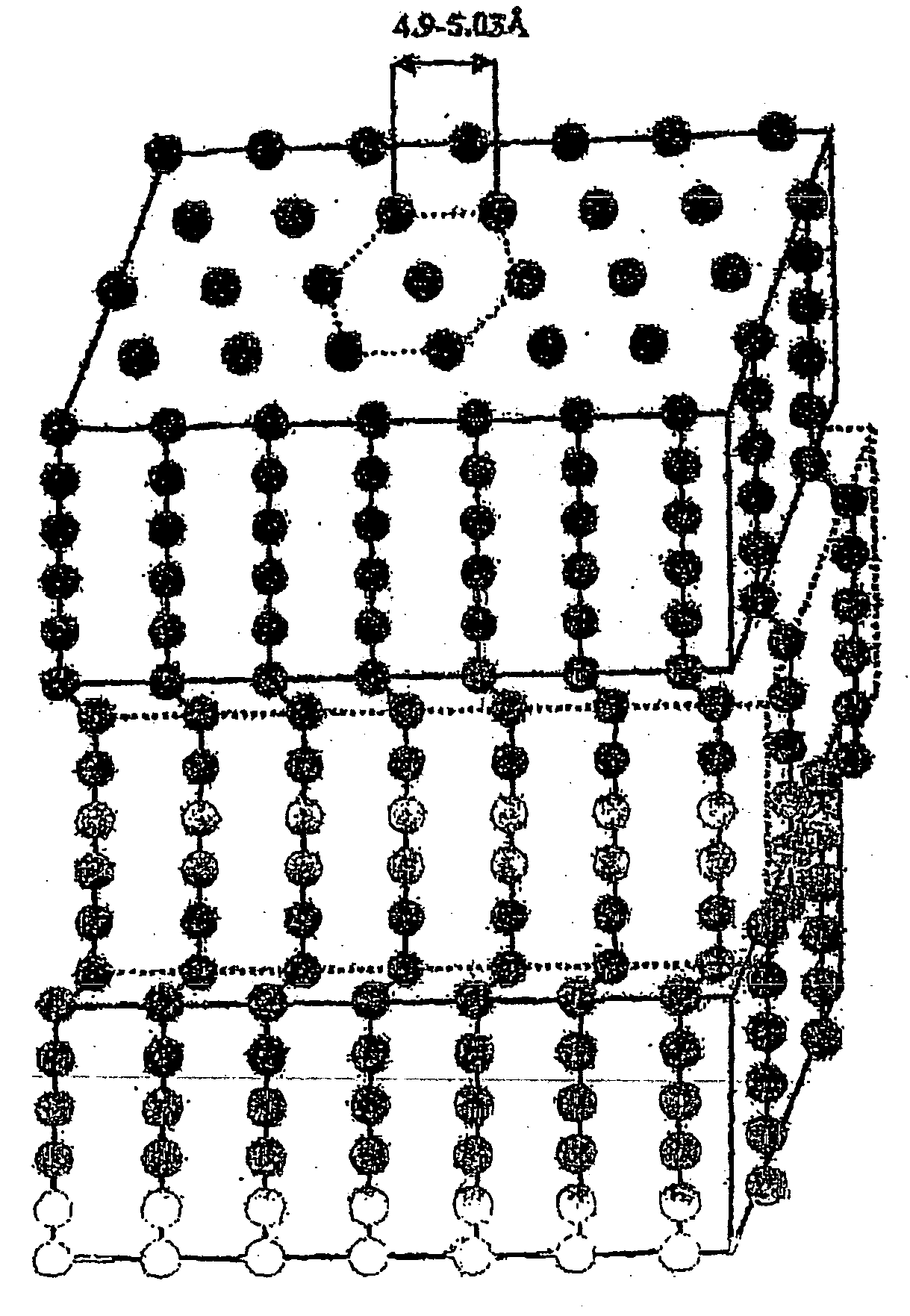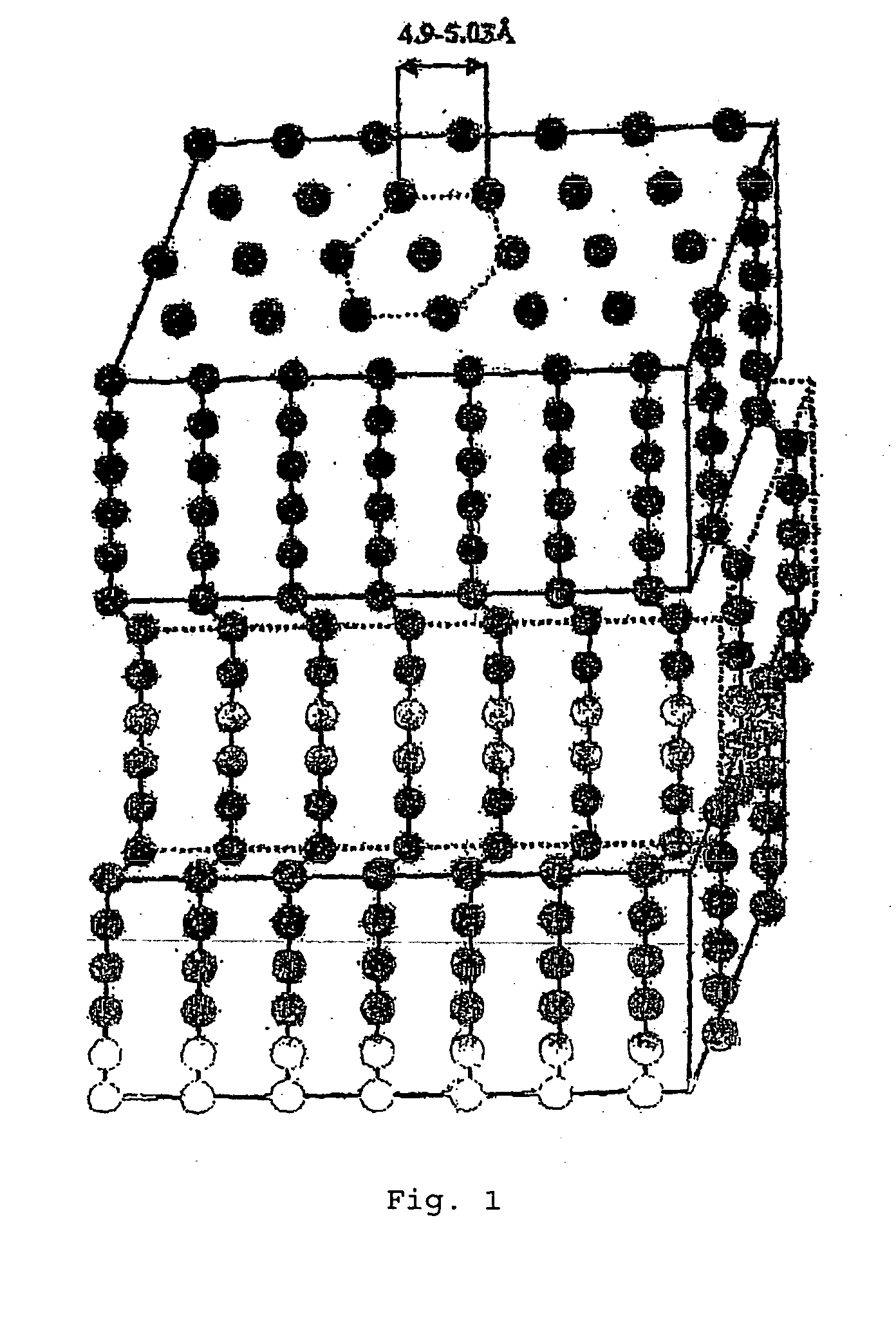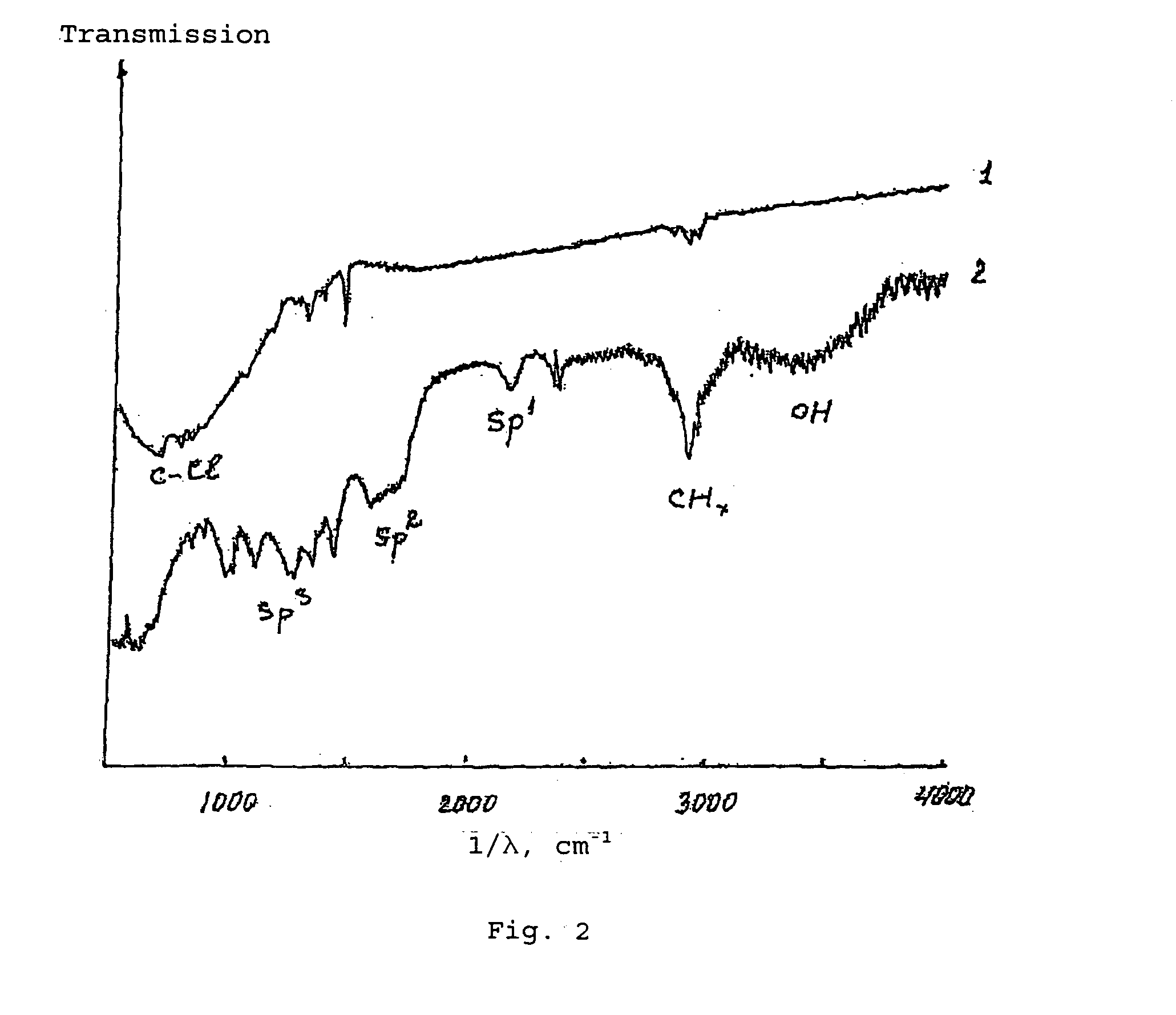Cold cathodes made of carbon materials
a carbon material and cold cathode technology, applied in the field of electromechanical devices, can solve the problems of insufficient positive results from efforts to increase the number of emission centres by means of a high density of nanotubes, and the technology of producing fibres with the required emission properties is fairly complex, so as to achieve the effect of reducing the expenditure of money and tim
- Summary
- Abstract
- Description
- Claims
- Application Information
AI Technical Summary
Benefits of technology
Problems solved by technology
Method used
Image
Examples
example 1
[0043] Polyvinylidenechloride yarn produced by the Rhovyl company, with a thread diameter of 10 μm, was used as the starting material.
[0044] Dehydrogenation was performed with a solution of KOH in ethyl alcohol 10% +acetone 20%, for one hour at room. temperature. The treated threads were washed in alcohol and water, and were then subjected to treatment at 700° C. in a vacuum of 10−4 Pa.
[0045] The following were performed in all stages: [0046] infra-red spectroscopy in the range from 400 to 4000 reciprocal centimetres, using a Perkin Elmer spectrometer, [0047] Raman spectroscopy with recording of Raman spectra using a Jobin Yvon spectrometer with an e wavelength λ=484.8 nanometres, [0048] chemical analysis of the composition of the material by electron spectroscopy in an ESCALAB-6 spectrometer.
[0049] In addition, images of samples of the fibres obtained were recorded in a YEM-100 electron microscope in phase contrast mode.
[0050]FIG. 2 shows IR spectra of the initial fibre (1) and...
example 2
[0059] Investigation of the emission properties of the carbon fibres produced.
[0060] An emitter was prepared from fibres obtained in accordance with example 1. The emitter and an anode were placed in a high-vacuum chamber in order to record the volt-ampere characteristic shown in FIG. 7 (curve 1). The dependence obtained approximates to the theoretical Schottky relationship
I˜exp.(C√E)=exp(e3 / 2E / kT),
where [0061] E is electrical field strength, [0062] e is the charge on an electron [0063] T is the cathode temperature.
[0064] As is well known, electron emission via the Schottky mechanism (effect) occurs due to thermal excitation of electrons from the Fermi level over the potential barrier Φ-ΔΦ (FIG. 8), where Φ is the work function of the material, ΔΦ is the reduction in work function on application of an electrical field Ex. Since ΔΦ is a function of voltage and increases as √E, the thermal current will increase with increase in E.
[0065] The Schottky mechanism applies when the el...
example 3
[0067] A suspension, prepared from crushed fibres (threads) manufactured by the method of example 1, is applied to a metal plate. The suspension is prepared from a powder of crushed threads in a solution which contains a binding component (a solution of polymer, an aqueous solution of adhesive). After forming an even layer of suspension on the metal substrate, it is dried. In this process, the solvent is evaporated off and a strong film is obtained, consisting of short lengths of fibres. As a result, a flat cold cathode with unlimited area is obtained.
[0068] The cathode is placed in a vacuum of 10−6 torr. An accelerating grid of metal is placed at a distance of 1 mm from it. An accelerating voltage U is applied between the cathode and the anode, and cold emission of electrons into the vacuum is obtained.
[0069]FIG. 9 shows the volt-ampere characteristic of a flat cold cathode prepared by such method. As can be seen, emission commences at a field strength of 2.4 V / μm (2.4·104 V / cm)....
PUM
| Property | Measurement | Unit |
|---|---|---|
| temperature | aaaaa | aaaaa |
| temperature | aaaaa | aaaaa |
| temperature | aaaaa | aaaaa |
Abstract
Description
Claims
Application Information
 Login to View More
Login to View More - R&D
- Intellectual Property
- Life Sciences
- Materials
- Tech Scout
- Unparalleled Data Quality
- Higher Quality Content
- 60% Fewer Hallucinations
Browse by: Latest US Patents, China's latest patents, Technical Efficacy Thesaurus, Application Domain, Technology Topic, Popular Technical Reports.
© 2025 PatSnap. All rights reserved.Legal|Privacy policy|Modern Slavery Act Transparency Statement|Sitemap|About US| Contact US: help@patsnap.com



